Choosing the right material for outdoor cushions feels like navigating a minefield of technical jargon, marketing claims, and conflicting advice. You've got sales people throwing around terms like "solution-dyed acrylic" and "marine-grade vinyl" while your neighbor swears by something completely different.
After spending over a decade working with outdoor textiles and helping thousands of customers find the perfect cushion materials, I can tell you this: there's no single "best" material for everyone. What works brilliantly in sunny California might fail miserably in humid Florida, and what's perfect for your weekend patio might be totally wrong for a poolside setup.
But don't worry – I'm going to break down everything you need to know about outdoor cushion materials in plain English. By the end of this guide, you'll understand exactly which materials work best for your specific situation, climate, and lifestyle.
The Big Picture: Understanding Outdoor Material Categories
Before diving into specific materials, let's establish the main categories you'll encounter. Outdoor cushion fabrics generally fall into four major groups, each with distinct characteristics and ideal applications.
Natural Fibers: The Traditional Choice
Natural fiber outdoor fabrics include cotton canvas, cotton duck, and treated linen blends. These materials have been used for marine and outdoor applications for centuries, but they require significant treatment to perform outdoors.
The appeal of natural fibers lies in their breathability and comfort. Cotton canvas, for example, has an excellent hand-feel and drapes beautifully. However, untreated natural fibers are vulnerable to UV damage, water absorption, and biological degradation.
Modern natural fiber outdoor fabrics undergo extensive treatment processes. According to the Textile World Magazine, contemporary cotton duck fabrics receive multiple treatments including water repellency, UV stabilization, and antimicrobial protection to make them suitable for outdoor use.

Synthetic Wovens: The Modern Standard
Synthetic woven fabrics dominate the outdoor cushion market, and for good reason. Materials like solution-dyed acrylic, polyester, and polypropylene offer superior weather resistance with lower maintenance requirements.
The key advantage of synthetic wovens is their engineered performance. Unlike natural fibers that require treatment after weaving, synthetic materials can be designed at the molecular level for specific properties like UV resistance, water repellency, and color fastness.
Solution-dyed acrylic, in particular, has become the gold standard for outdoor applications. The pigment is added during fiber production rather than applied afterward, resulting in colors that won't fade even after years of sun exposure.
Vinyl and Coated Fabrics: The Heavy-Duty Option
Marine-grade vinyl and other coated fabrics represent the extreme performance end of outdoor materials. These materials are essentially impervious to water, highly resistant to stains, and incredibly durable.
The trade-off is comfort and breathability. Vinyl doesn't breathe at all, which can make cushions hot and sticky in warm weather. However, for applications where durability trumps comfort – like boat cushions or poolside loungers – vinyl excels.
Mesh and Technical Fabrics: The Specialty Players
Mesh fabrics and technical textiles represent emerging categories in outdoor cushions. These materials prioritize specific performance characteristics like rapid drying, extreme breathability, or antimicrobial properties.
While still niche, technical fabrics are gaining popularity in specific applications where traditional materials fall short.
Key Insight: The "best" outdoor cushion material depends entirely on your priorities. Are you optimizing for comfort, durability, low maintenance, or weather resistance? Understanding your priorities helps narrow the field significantly.
Solution-Dyed Acrylic: The Versatile Champion
If I had to pick one material that works well in the most situations, it would be high-quality solution-dyed acrylic. This material strikes an excellent balance between performance, comfort, and versatility.
The Science Behind Superior Performance
Solution-dyed acrylic's advantage starts at the fiber level. Instead of dyeing finished fabric, the color is incorporated into the polymer before the fiber is extruded. This creates color that's integral to the fiber itself, not just sitting on the surface.
The result? Colors that maintain their vibrancy for years, even under intense UV exposure. I've seen 5-year-old solution-dyed acrylic cushions that still look nearly new, while conventionally dyed fabrics show significant fading after just one season.
The fiber structure also contributes to performance. Acrylic fibers naturally resist moisture absorption and biological growth, making them inherently mold and mildew resistant without additional treatments.

Real-World Performance Characteristics
In practical terms, quality solution-dyed acrylic fabrics offer:
- Excellent UV stability – Colors remain vibrant for years
- Good water resistance – Sheds rain while allowing air circulation
- Mold and mildew resistance – Natural fiber properties resist biological growth
- Comfortable hand-feel – Soft and pleasant to touch
- Easy cleaning – Most stains clean with mild soap and water
The limitations are worth noting too. Solution-dyed acrylic isn't waterproof, so it will eventually wet through in heavy rain. It also requires periodic cleaning to maintain appearance and performance.
Brand Quality Variations
Not all solution-dyed acrylics are created equal. Premium brands like Sunbrella use higher-quality fibers and tighter weaves, resulting in better performance and longevity. Budget alternatives may use lower-grade fibers or looser weaves that compromise durability.
The weave pattern also matters significantly. Tighter weaves provide better weather resistance but may feel stiffer. Looser weaves are more comfortable but allow more water and dirt penetration.
Polyester: The Budget-Conscious Alternative
Polyester outdoor fabrics offer many of the benefits of acrylic at a lower price point, but with some important trade-offs to understand.
Performance Characteristics
High-quality polyester outdoor fabrics can perform quite well, especially when properly treated. Polyester fibers are naturally hydrophobic and resist biological growth, making them suitable for outdoor use.
The challenge with polyester is achieving good UV stability. Polyester fibers are more susceptible to UV degradation than acrylic, requiring better stabilization treatments to achieve comparable longevity.
Modern polyester outdoor fabrics often include multiple treatments:
- UV stabilizers to prevent degradation
- Water-repellent coatings for weather resistance
- Antimicrobial treatments for hygiene
- Stain-resistant finishes for easy cleaning

Cost vs. Performance Analysis
Quality polyester outdoor fabrics typically cost 20-40% less than comparable acrylic alternatives. For many applications, this cost savings is meaningful without significant performance compromise.
The key is selecting polyester fabrics specifically designed for outdoor use. Generic polyester fabrics won't perform well outdoors, regardless of price. Look for outdoor-specific polyester with documented UV stability ratings and weather resistance testing.
Pro Tip: If you're considering polyester for cost reasons, focus on reputable outdoor fabric brands rather than generic options. The performance gap between good and poor polyester is enormous, while the price difference is often minimal.
Marine-Grade Vinyl: Maximum Durability
For applications demanding maximum durability and water resistance, marine-grade vinyl remains unmatched. This material is designed to withstand the harshest outdoor conditions without compromise.
Construction and Performance
Marine-grade vinyl typically consists of a vinyl coating applied to a polyester or cotton backing fabric. The vinyl layer provides complete water resistance, while the backing fabric adds strength and stability.
Quality marine vinyl uses UV-stabilized vinyl compounds that resist cracking, chalking, and color degradation even under intense sun exposure. The best marine vinyls maintain flexibility and appearance for years in conditions that would destroy other materials.
Cleaning is exceptionally easy – most spills and stains wipe away with a damp cloth. Even stubborn stains usually respond to mild detergent without requiring special treatments or professional cleaning.
Comfort Considerations
The main limitation of vinyl is comfort, especially in warm weather. Vinyl doesn't breathe, so it can become hot and sticky when in direct contact with skin. This makes vinyl less suitable for applications where people will be in prolonged direct contact with the cushions.
However, for cushions that are primarily covered by towels, used briefly, or in cooler climates, vinyl's durability advantages often outweigh the comfort limitations.

Mesh and Technical Fabrics: The Specialized Solutions
For specific applications, mesh and technical fabrics can provide performance characteristics that traditional materials can't match.
Quick-Dry Mesh Fabrics
Mesh fabrics excel in applications where rapid water drainage is critical. Pool areas, boat cushions, and high-humidity environments can benefit significantly from mesh construction.
The open structure allows water and air to pass through freely, preventing the moisture buildup that can lead to mold and mildew. Quality mesh fabrics also dry much faster than traditional materials after rain or cleaning.
The trade-off is reduced comfort for extended sitting. Mesh doesn't provide the same cushioning effect as solid fabrics, and the texture can be less pleasant against skin.
Antimicrobial Technical Fabrics
Some specialized technical fabrics incorporate advanced antimicrobial treatments that go beyond standard mold and mildew resistance. These materials actively inhibit bacterial growth, making them suitable for applications where hygiene is paramount.
Healthcare facilities, commercial applications, and households with immune-compromised individuals might benefit from these specialized materials, though they typically cost significantly more than standard options.
Climate-Specific Material Selection
Your local climate should be the primary factor in material selection. What works perfectly in one environment may fail quickly in another.
Hot, Dry Climates
Desert and semi-arid environments present extreme UV exposure and temperature swings. For these conditions, prioritize UV stability above all else. Solution-dyed acrylic with tight weaves performs excellently, as does high-quality marine vinyl.
Avoid materials that become excessively hot in direct sunlight. Dark colors and non-breathable materials can become uncomfortably hot in desert conditions.

Humid, Tropical Environments
High-humidity environments require materials that resist moisture accumulation and biological growth. Breathability becomes crucial to prevent condensation buildup within cushions.
Solution-dyed acrylic with good air permeability works well, as do mesh fabrics for applications where rapid drying is important. Avoid coated materials that trap moisture.
According to research from the Advanced Textiles Association, fabric treatments specifically designed for high-humidity environments can significantly extend material life in tropical conditions.
Coastal and Marine Environments
Salt air presents unique challenges that accelerate material degradation. Standard outdoor fabrics may fail prematurely in marine environments without specific salt-resistance treatments.
Marine-grade materials are obviously designed for these conditions, but high-quality solution-dyed acrylics also perform well with proper maintenance. Regular cleaning to remove salt deposits is essential regardless of material choice.
Seasonal/Variable Climates
Areas with distinct seasons require materials that can handle diverse conditions – from intense summer sun to potential winter moisture and temperature extremes.
Versatile materials like quality solution-dyed acrylic or treated polyester work well in variable climates. The key is selecting materials with broad performance capabilities rather than optimizing for a single extreme condition.
Maintenance Requirements and Long-Term Performance
Different materials have vastly different maintenance needs. Understanding these requirements helps you choose materials compatible with your maintenance preferences and capabilities.
Low-Maintenance Options
Marine vinyl requires minimal maintenance – regular cleaning with mild soap and water keeps it looking good for years. Stains wipe away easily, and there's no need for special treatments or professional cleaning.
High-quality solution-dyed acrylic also maintains well with basic care. Periodic cleaning with mild detergent and water handles most maintenance needs, with occasional deep cleaning for stubborn stains.
Maintenance Comparison Summary:
Lowest Maintenance: Marine vinyl, quality mesh fabrics
Moderate Maintenance: Solution-dyed acrylic, treated polyester
Higher Maintenance: Natural fibers, budget synthetics
Performance Degradation Patterns
Different materials fail in predictable ways. Understanding these patterns helps you plan replacement cycles and identify quality issues early.
Solution-dyed acrylic typically shows gradual softening of colors and slight texture changes over years. The material remains functional long after cosmetic changes become apparent.
Polyester may show UV damage through color fading and fiber weakening. Quality polyester degrades gradually, while poor-quality material can fail suddenly after apparent stability.
Vinyl typically fails through cracking or splitting, especially in high-flex areas. Quality marine vinyl maintains flexibility much longer than automotive or furniture-grade alternatives.

Color and Design Considerations
Material choice interacts significantly with color and design decisions. Some materials offer broader color options, while others provide better color retention over time.
Color Fastness and UV Stability
Solution-dyed materials offer the best color retention, with vibrant colors maintaining their appearance for years. The color integration process means fading occurs very gradually and evenly.
Piece-dyed materials (where finished fabric is dyed) are more vulnerable to UV fading, especially in bright colors. Darker colors generally show less noticeable fading than lighter shades.
Printed patterns present additional challenges. The printing process and ink quality significantly affect longevity, with some prints fading within months while others last years.
Heat Absorption and Comfort
Color affects temperature significantly in outdoor applications. Dark colors absorb more heat and can become uncomfortably hot in direct sunlight, while light colors reflect heat and stay cooler.
This is particularly important for materials like vinyl that already retain heat. A dark vinyl cushion in direct desert sun can become too hot to touch, while light-colored vinyl remains manageable.
Custom Applications and Specialized Needs
Sometimes standard materials don't meet specific requirements, making custom solutions necessary. Understanding when and why to consider custom approaches can save time and money.
For square seat cushions and other standard shapes, proven material choices work well. But complex shapes like outdoor papasan chair cushions may require different material considerations due to their curved construction and usage patterns.
Specialized environments like RVs, boats, or commercial applications may demand materials with specific certifications or performance characteristics not found in standard residential options.
Custom Consideration: When standard materials don't meet your specific needs, working with experienced custom cushion specialists can provide access to commercial-grade materials and specialized constructions not available in retail markets.
Emerging Materials and Future Trends
The outdoor textile industry continues to innovate, with new materials and treatments appearing regularly. Some trends worth watching could influence your material selection.
Bio-Based Synthetics
Manufacturers are developing synthetic outdoor fabrics from renewable sources rather than petroleum-based materials. These bio-based synthetics aim to provide traditional performance characteristics with reduced environmental impact.
Early bio-based outdoor fabrics show promising performance, though they're still more expensive than conventional alternatives and have limited availability.
Smart Fabrics and Responsive Materials
Phase-change materials and other smart fabric technologies are beginning to appear in outdoor applications. These materials can regulate temperature, manage moisture dynamically, or even change properties based on environmental conditions.
While still expensive and limited in availability, smart fabrics represent the future direction of high-performance outdoor textiles.

Recyclable and Circular Economy Materials
Sustainability concerns are driving development of outdoor fabrics designed for end-of-life recycling. These materials maintain performance while enabling circular economy approaches to textile waste.
Some manufacturers now offer take-back programs for old outdoor cushions, recycling the materials into new products and reducing landfill waste.
Making Your Material Decision: A Step-by-Step Process
With so many factors to consider, how do you actually choose the best material for your specific situation? Here's my recommended decision-making process:
Step 1: Assess Your Environment
Start with your climate and exposure conditions:
- UV intensity and duration
- Humidity levels and precipitation patterns
- Temperature extremes and daily variations
- Salt exposure (coastal areas)
- Wind patterns and debris exposure
Step 2: Define Your Priorities
Rank these factors by importance to your situation:
- Durability and longevity
- Comfort and hand-feel
- Maintenance requirements
- Initial cost vs. total cost of ownership
- Aesthetic preferences and design flexibility
Step 3: Evaluate Usage Patterns
Consider how you actually use your outdoor space:
- Daily use vs. occasional use
- Extended sitting vs. brief contact
- Entertainment/guests vs. family only
- Seasonal storage capabilities
- Cleaning and maintenance time availability

Quality Assessment: How to Identify Superior Materials
Not all materials within a category perform equally. Knowing how to identify quality indicators helps you avoid disappointment and get the best value for your investment.
Physical Quality Indicators
When evaluating fabric samples, look for:
- Tight, even weave – Higher thread counts generally indicate better quality
- Consistent color and texture – Variations suggest manufacturing issues
- Appropriate hand-feel – Should feel substantial without being excessively stiff
- Clean edges and finishing – Quality control indicators
Certification and Testing Standards
Reputable outdoor fabrics should meet specific industry standards. According to the American Association of Textile Chemists and Colorists, proper outdoor fabric testing includes UV stability, water resistance, and colorfastness evaluations.
Look for specific test results rather than vague marketing claims. Terms like "fade-resistant" or "weather-resistant" are meaningless without supporting test data.
Brand Reputation and Track Record
Established outdoor fabric brands invest heavily in research and development, quality control, and customer satisfaction. While brand name alone doesn't guarantee quality, it does indicate a commitment to maintaining reputation through consistent performance.
Lesser-known brands can offer excellent value, but require more careful evaluation of specifications and performance claims.
Quality Tip: Ask for actual fabric samples rather than relying on photos or descriptions. Physical evaluation reveals quality differences that aren't apparent in marketing materials. Feel the fabric, test its flexibility, and examine the weave structure closely.
Cost Analysis: Understanding True Value
Initial material cost is just one component of total ownership cost. A comprehensive cost analysis considers replacement frequency, maintenance expenses, and performance satisfaction over time.
Initial Cost vs. Lifespan Analysis
Premium materials often provide better value over their useful life despite higher upfront costs. A solution-dyed acrylic fabric costing 50% more than polyester may last twice as long, making it more economical overall.
Calculate cost-per-year rather than just comparing initial prices. Include replacement costs, shipping, and the value of your time for maintenance and replacement activities.
Hidden Costs and Considerations
Some materials have hidden costs that aren't immediately apparent:
- Specialized cleaning requirements and products
- Professional cleaning services for difficult stains
- Protective treatments and reapplication costs
- Storage solutions for seasonal removal
- Early replacement due to performance failure
Low-maintenance materials like marine vinyl may justify higher initial costs through reduced ongoing expenses and hassle.
Environmental Impact and Sustainability
As environmental consciousness grows, material sustainability becomes increasingly important in purchasing decisions. Different outdoor cushion materials have vastly different environmental footprints.
Production Impact
Synthetic materials generally require significant energy and resources for production, but their longevity can offset initial environmental impact. Natural materials may have lower production impact but often require chemical treatments that reduce their environmental benefits.
Solution-dyed acrylic, for example, uses less water and energy than piece-dyed alternatives because the dyeing happens during fiber production rather than as a separate process.
End-of-Life Considerations
Material recyclability and disposal impact vary significantly. Some synthetic materials can be recycled into new products, while others contribute to landfill waste.
Durability also affects environmental impact – materials lasting 5-7 years have much lower environmental impact per year of use than materials requiring replacement every 2-3 years.
Creating Your Perfect Outdoor Comfort Solution
Selecting the best outdoor cushion material isn't about finding a universal "winner" – it's about understanding your specific needs and matching them with the right material characteristics. Whether you prioritize maximum durability, easy maintenance, superior comfort, or environmental responsibility, there's a material that aligns with your goals.
At Rulaer, we've worked with every type of outdoor cushion material across thousands of projects. From outdoor egg chair cushions that need specialized shaping to outdoor rocking chair cushions that demand extra durability, we understand how material choice impacts real-world performance.
Our experience spans everything from standard residential applications to specialized commercial and marine environments. We're not just selling materials – we're helping you create outdoor spaces that truly enhance your lifestyle for years to come.
Ready to find your ideal outdoor cushion material? Explore our comprehensive collection and discover how the right material choice can transform your outdoor living experience. Your perfect outdoor oasis starts with the right foundation.

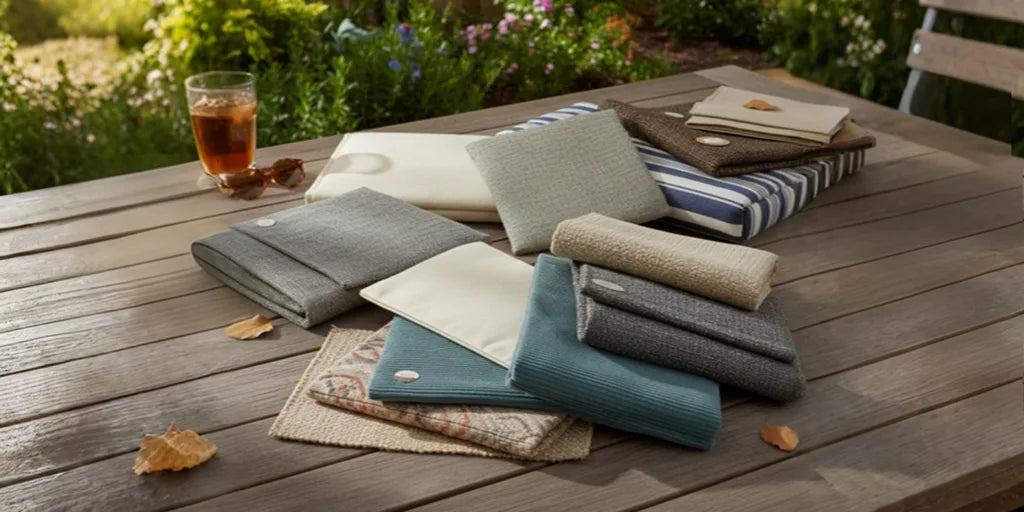
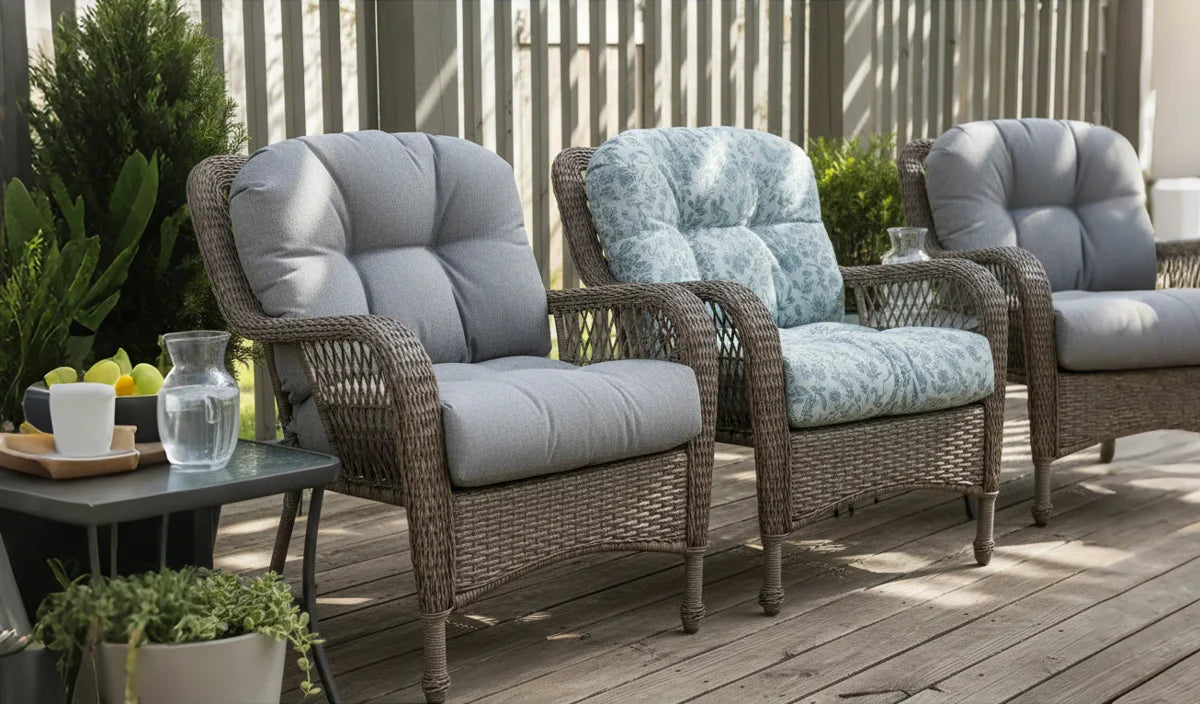
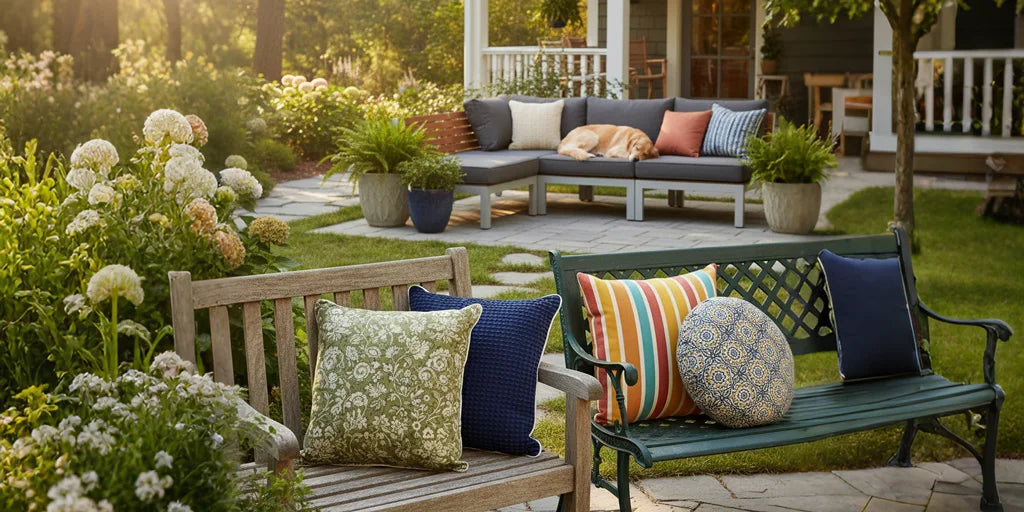
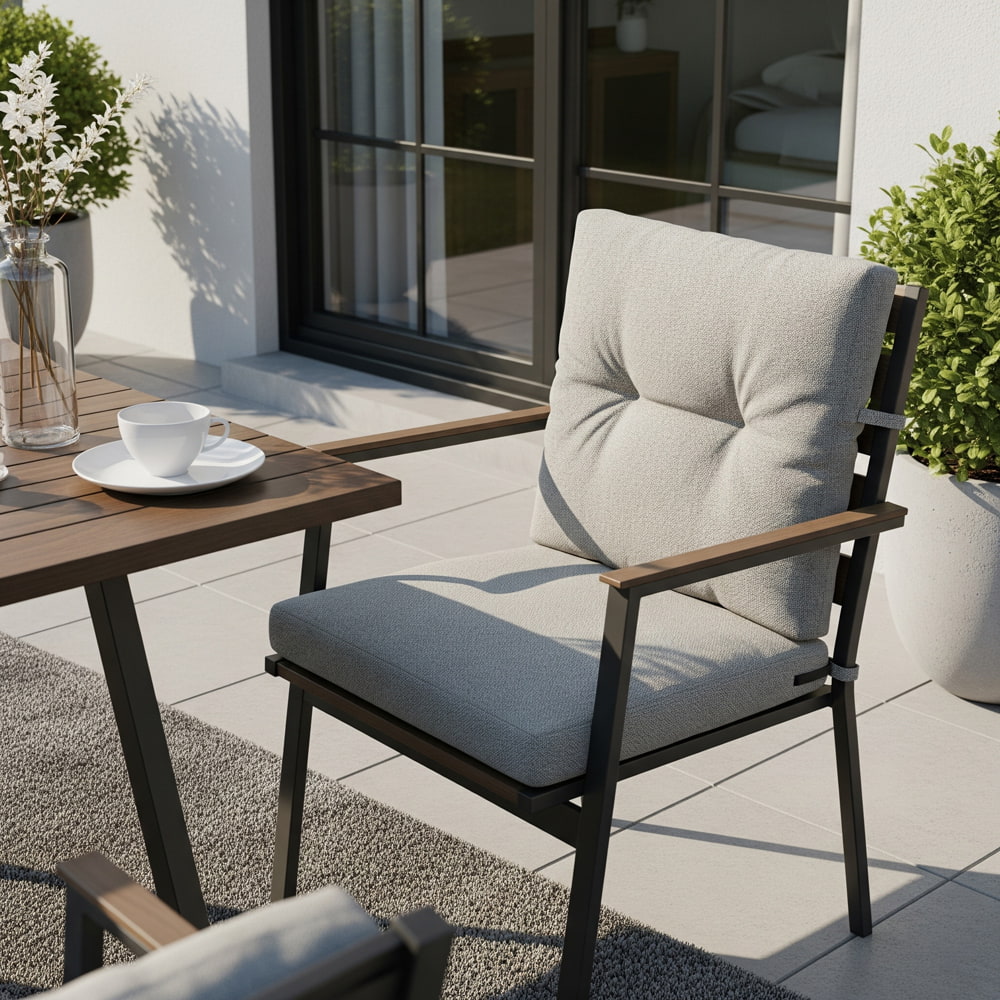
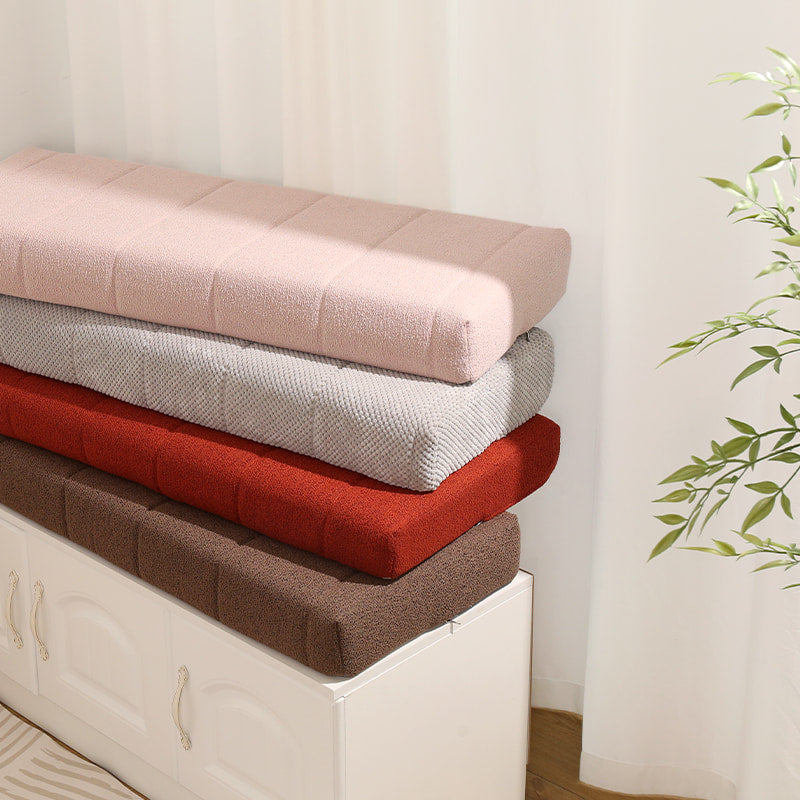
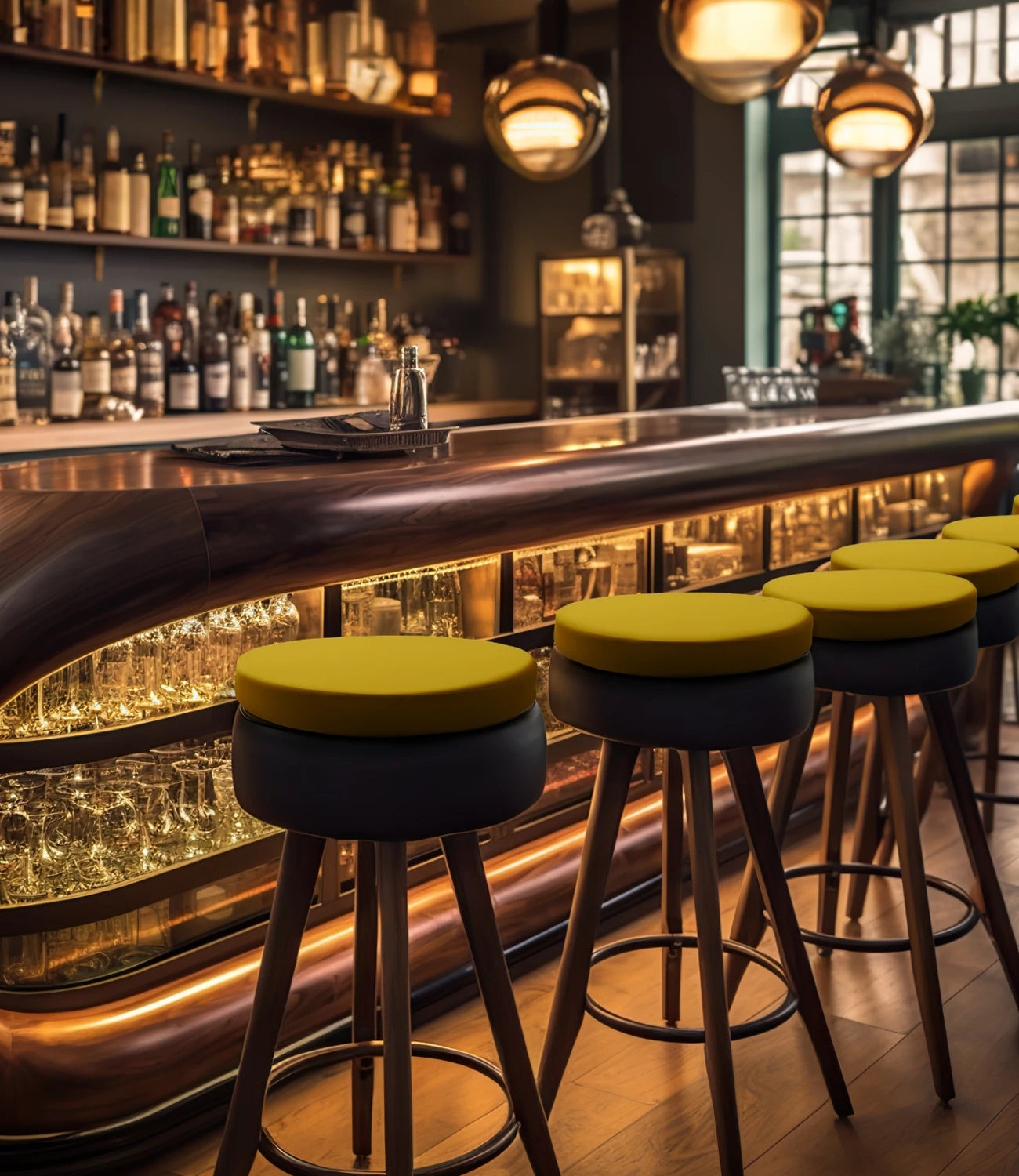
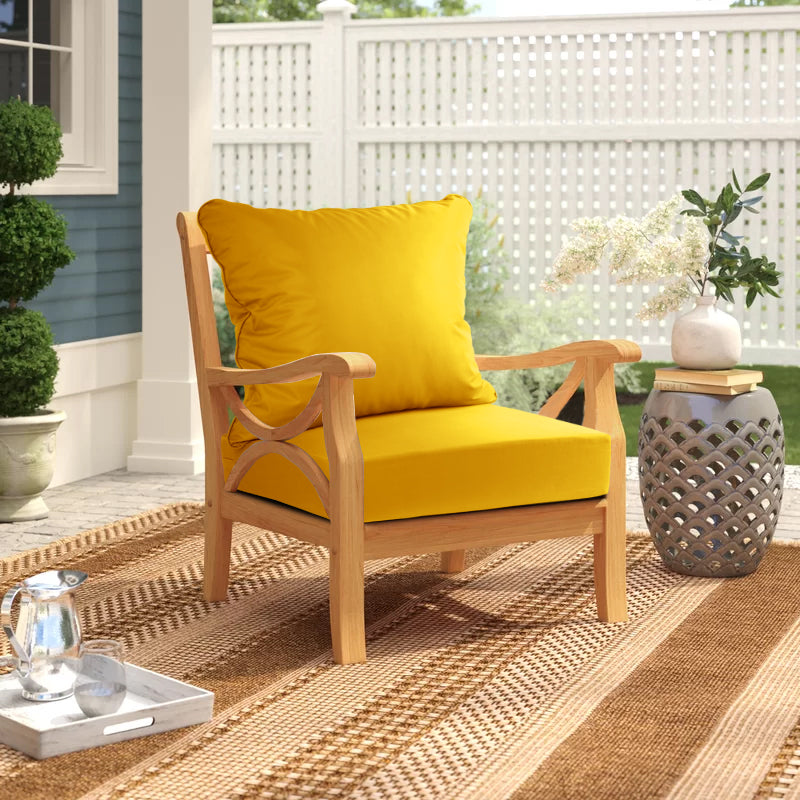
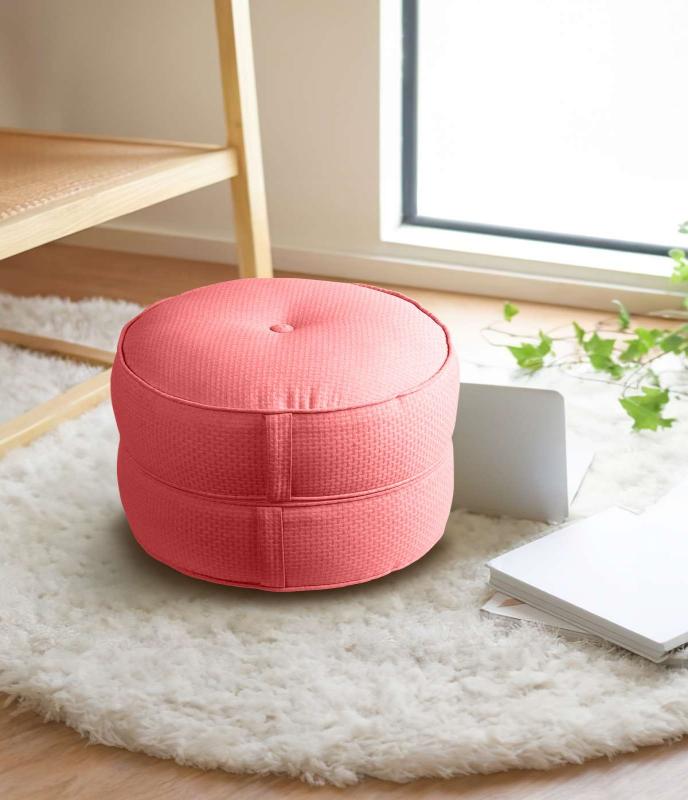
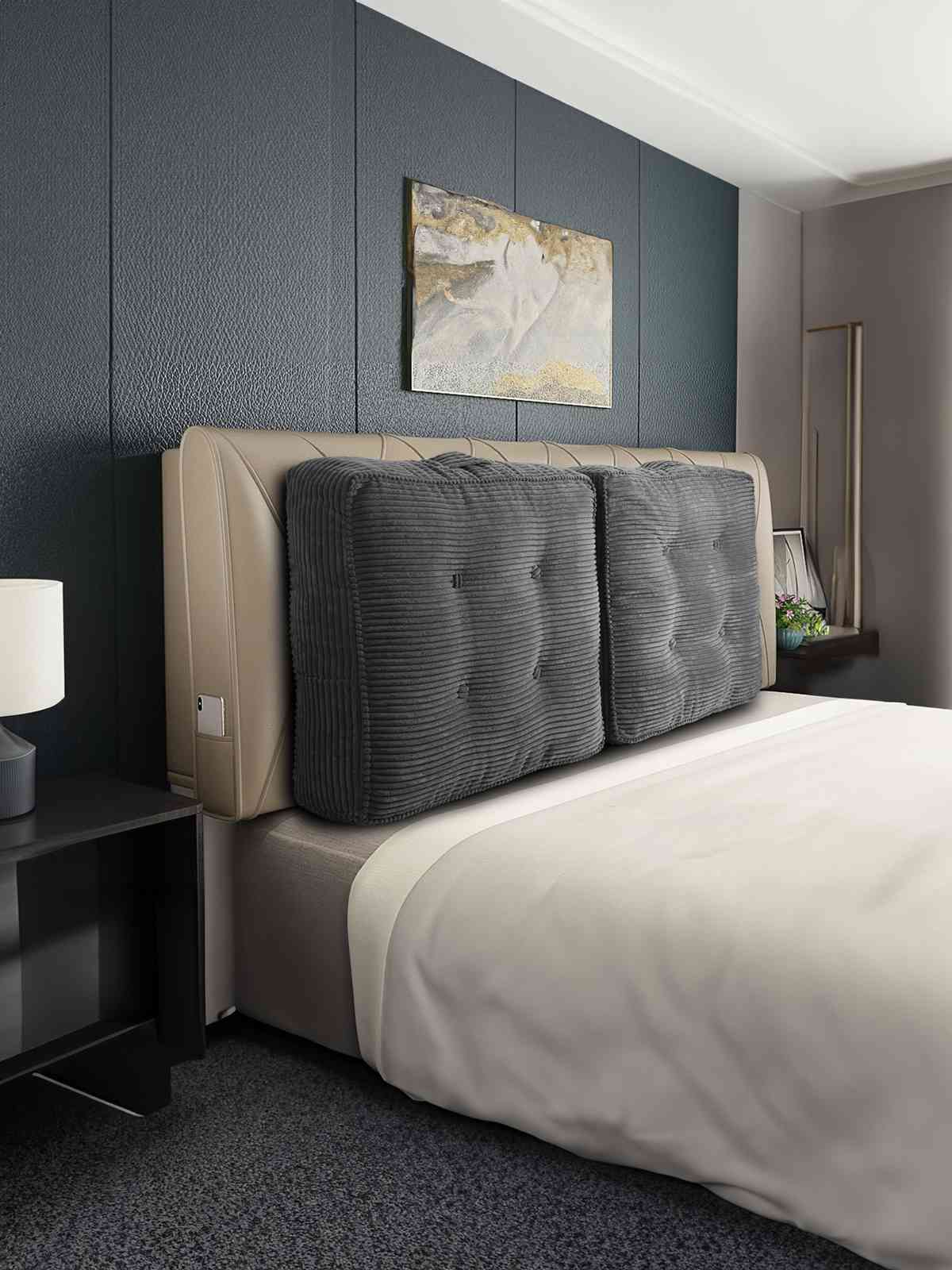
Leave a comment
All comments are moderated before being published.
This site is protected by hCaptcha and the hCaptcha Privacy Policy and Terms of Service apply.